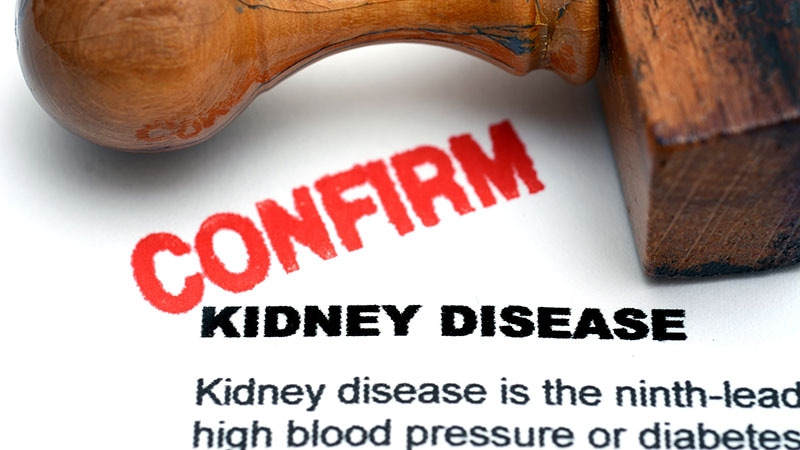
The American Diabetes Association (ADA) and the Kidney Disease: Improving Global Outcomes (KDIGO) organization have together spelled out broad agreement on how clinicians should now manage patients with diabetes and chronic kidney disease (CKD) in a new consensus report published online October 3 in Diabetes Care and Kidney International.
The report also guides use of these new agents in concert with two well-established mainstays for treating these patients — metformin and renin-angiotensin system inhibitors (angiotensin-converting enzyme [ACE] inhibitor or angiotensin II receptor blocker [ARB]) — for the many patients with diabetes and CKD who also have hypertension and albuminuria.
The writing panel says the goal of the consensus report is to highlight shared recommendations from the ADA's updated Standards of Medical Care in Diabetes —2022 and KDIGO's 2022 Clinical Practice Guideline for Diabetes Management in Chronic Kidney Disease.
All patients with diabetes (type 1 or type 2) and CKD should receive treatment according to a "comprehensive plan" that adds pharmacologic management to the important lifestyle steps of optimized nutrition, exercise, smoking cessation, and weight goals, while also applying other therapies aimed at attaining target levels of glycemia, blood pressure, and lipids.
Treatment with an ACE inhibitor or ARB is important for all patients with diabetes, hypertension, and albuminuria, titrated to maximum doses.
The report recommends metformin for all patients with type 2 diabetes, CKD, and an eGFR of at least 30 mL/min/1.73m2, along with recommendations on eGFR-based dose adjustments for metformin.
The panel also recommends treatment with an SGLT2 inhibitor with proven renal or cardiovascular benefits for all patients with type 2 diabetes, CKD, and an eGFR of at least 20 mL/min/1.73m2.
The report advises continued treatment with an SGLT2 inhibitor once started even if a patient's eGFR dips below this minimum.
The report puts treatment with a GLP-1 agonist second-line for patients with type 2 diabetes and CKD who do not reach their glycemic target on metformin and an SGLT2 inhibitor, and for patients unable to use these classes of drugs first-line.
Finally, the panel recommends using an agent from the nonsteroidal mineralocorticoid receptor antagonist class with proven kidney and cardiovascular benefits for patients with type 2 diabetes, CKD, and an eGFR of at least 25 mL/min/1.73m2, with an albumin-to-creatinine ratio of at least 30 mg/g, a normal serum potassium level, and on a maximum-tolerated dose of a renin-angiotensin system inhibitor.